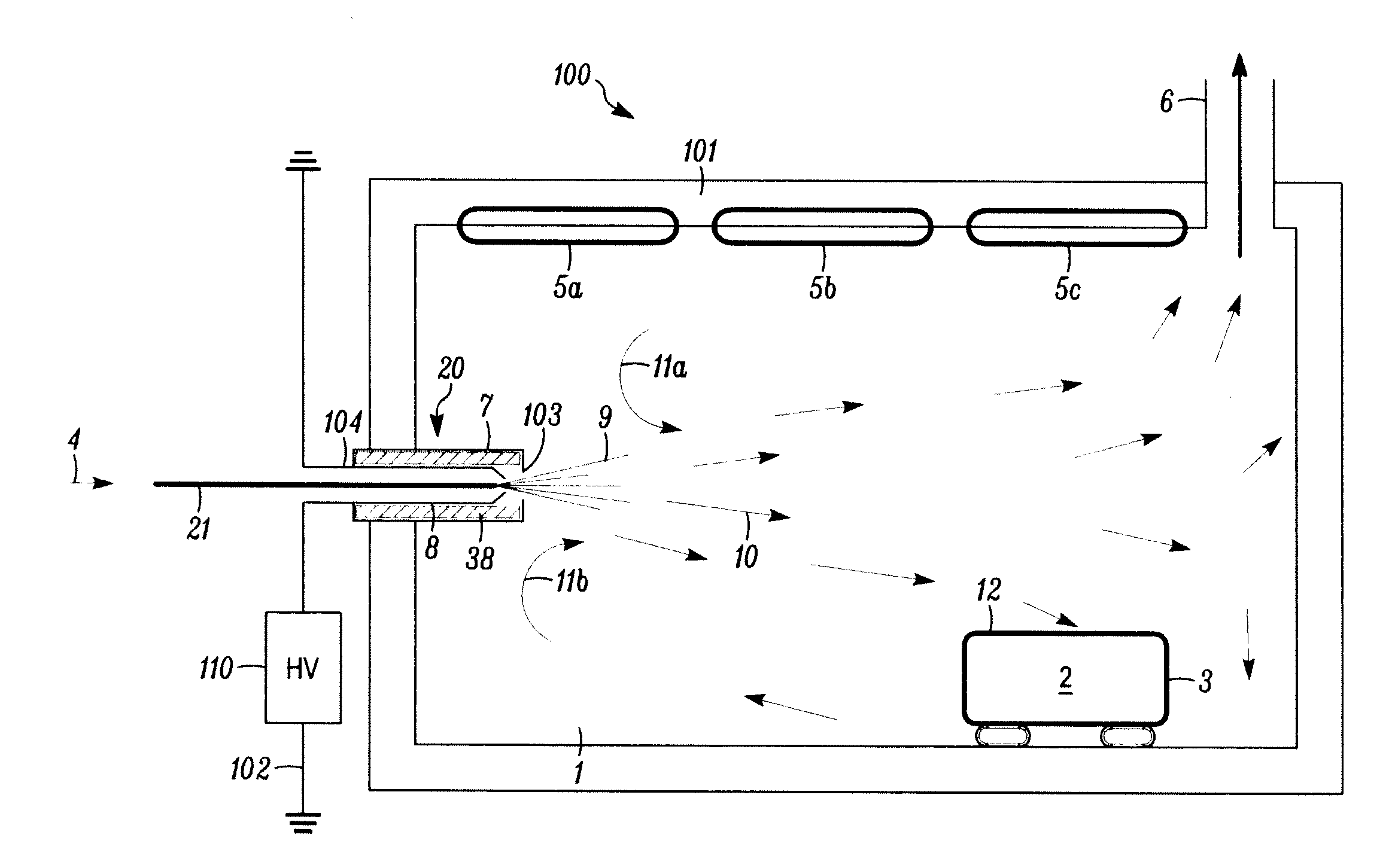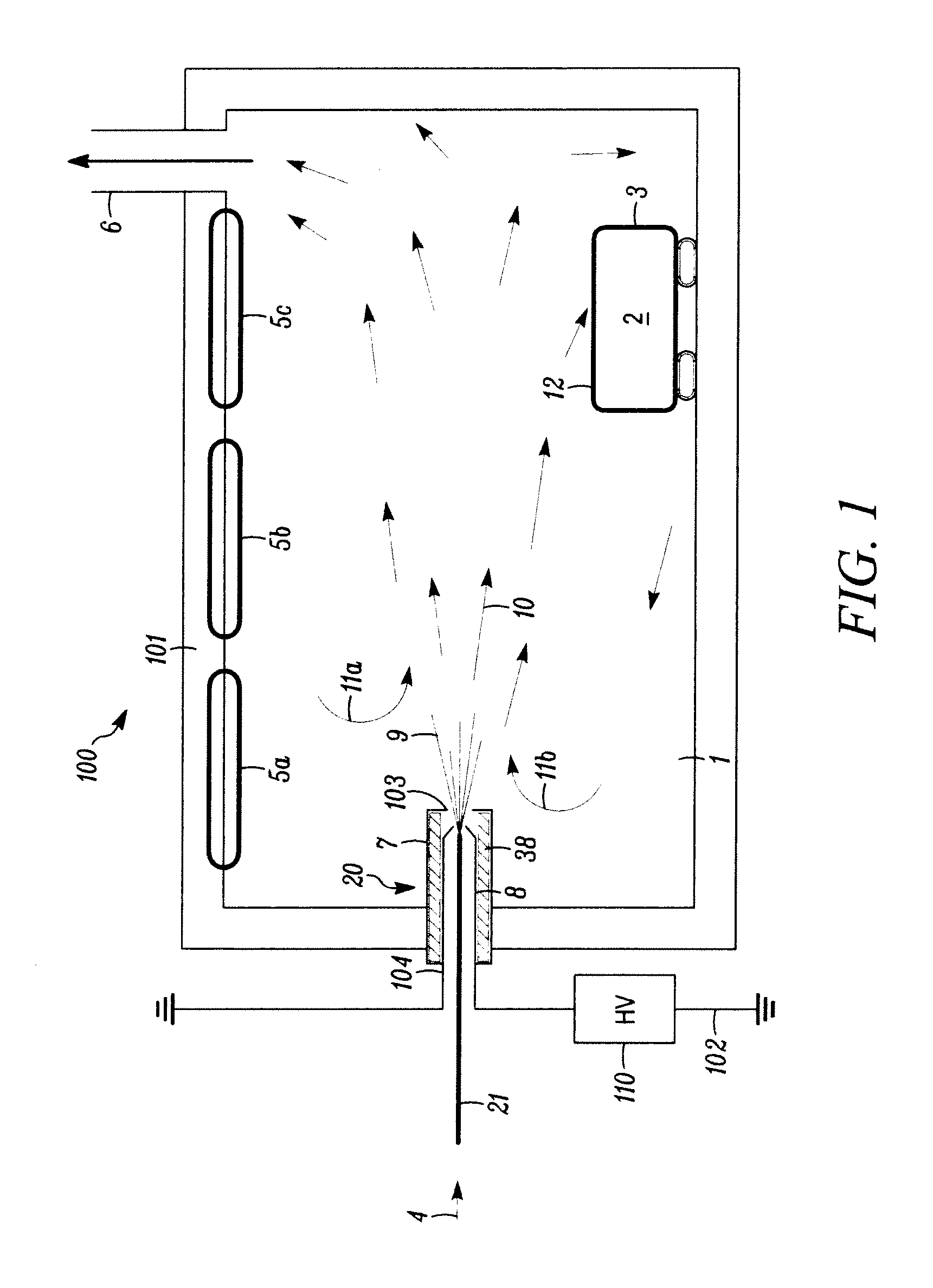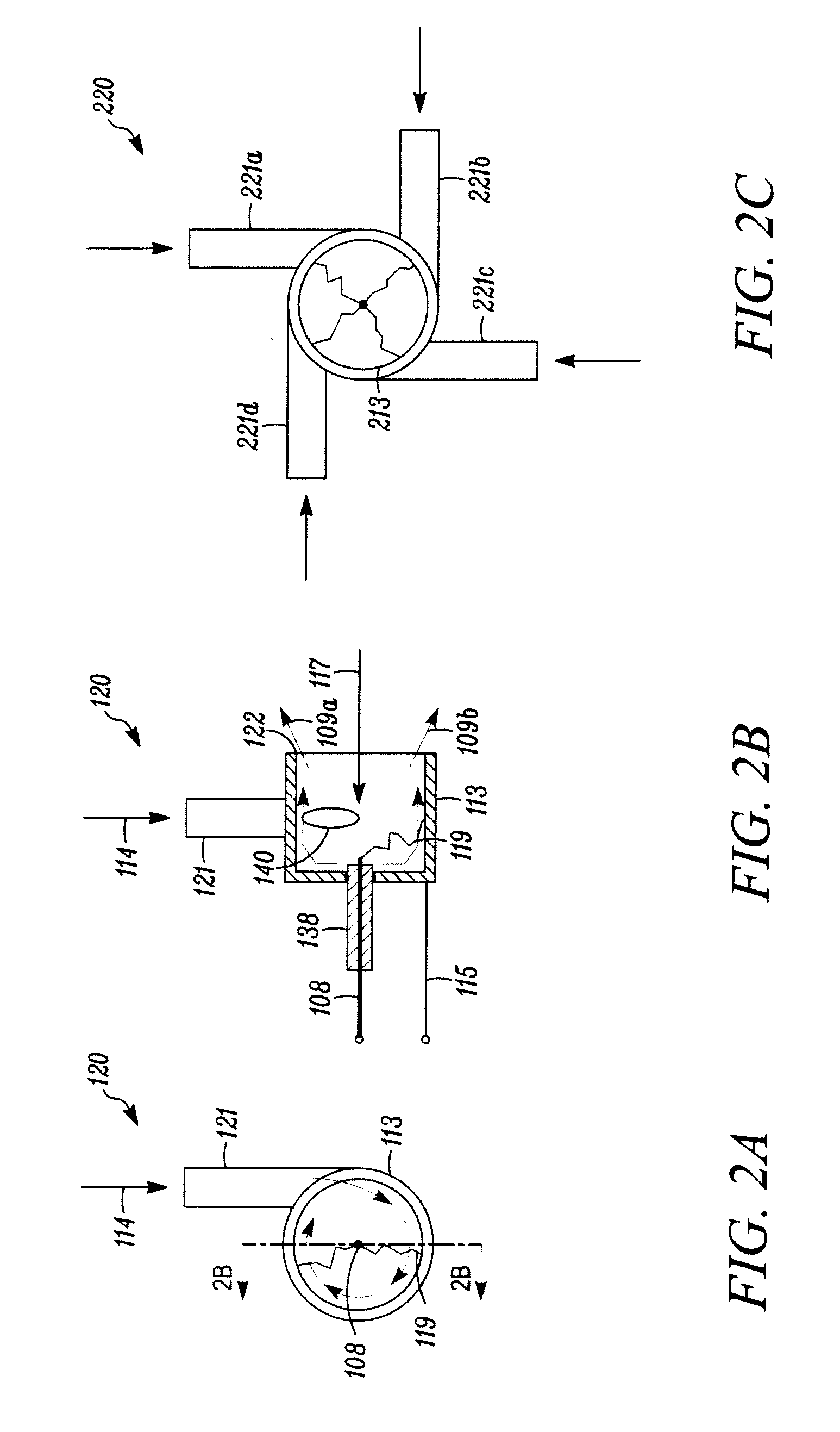Furnace atmosphere activation method and apparatus
a technology of activation method and apparatus, applied in plasma technique, solid-state diffusion coating, energy-based chemical/physical/physico-chemical processes, etc., can solve the problems of environmental air leakage, slow kinetic reaction or stability, and risk of damaging the loaded metallic material or work par
- Summary
- Abstract
- Description
- Claims
- Application Information
AI Technical Summary
Benefits of technology
Problems solved by technology
Method used
Image
Examples
second embodiment
[0032]FIGS. 2A & 2B show an activated gas injector 120 which includes a cylindrical cup 113 having an open end 122, a supply pipe 121 and an electrode 108. The internal volume defined by the cup 113 and the open end 122 is the activation chamber for this embodiment. Like the electrode 8 shown in FIG. 1, the electrode 108 is preferably connected to a high-voltage, low-current power supply (not shown). The electrode 108 extends into the cup 113 along its central axis, terminates inside the cup 113 (i.e., does not extend past the open end 122 of the cup 113) and is insulated from the cup 113, preferably by a ceramic, high-temperature-resistant insulator 138. The cup 113 is preferably made from a conductive metal and is grounded by a ground lead 115.
[0033]When operated, a process gas stream 114 is injected into the cup 113 from an external source via an inlet 140 from a gas supply pipe 121. The gas supply pipe 121 and the inlet 140 is preferably positioned tangent to the perimeter of th...
third embodiment
[0035]FIG. 2C shows the activated gas injector shown in FIGS. 2A & 2B. In this embodiment, the activated gas injector 220 includes multiple tangential injection ports 221a, 221b, 221c, 221d for the process gas, which may provide assuring a more uniform swirling inside the cup 213.
[0036]FIGS. 3A, 3B and 3C show three additional embodiments of the activated gas injector. The activated gas injector 320 depicted in FIG. 3A is identical to activated gas injector 120 (shown in FIGS. 2A & 2B), except that the open end 322 of the injector cup 313 is partially-covered by a lid 330 having an axial hole 331 formed therein. As compared to the activated gas injector 120, the activated gas injector 320 reduces aspiration of furnace atmosphere gas into the injector cup 313 and increases the velocity of the electric discharge activated stream 309 as it exits the injector cup 313. As a result, increased aspiration and entrainment of the furnace gases with the electric discharge-activated stream 309 ...
PUM
| Property | Measurement | Unit |
|---|---|---|
| Pressure | aaaaa | aaaaa |
| Angle | aaaaa | aaaaa |
| Current | aaaaa | aaaaa |
Abstract
Description
Claims
Application Information
 Login to View More
Login to View More - R&D
- Intellectual Property
- Life Sciences
- Materials
- Tech Scout
- Unparalleled Data Quality
- Higher Quality Content
- 60% Fewer Hallucinations
Browse by: Latest US Patents, China's latest patents, Technical Efficacy Thesaurus, Application Domain, Technology Topic, Popular Technical Reports.
© 2025 PatSnap. All rights reserved.Legal|Privacy policy|Modern Slavery Act Transparency Statement|Sitemap|About US| Contact US: help@patsnap.com



